Question 1
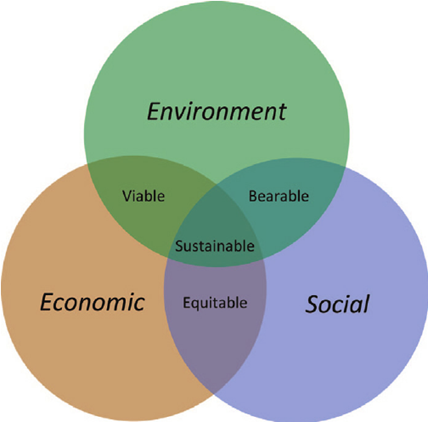
Source: Keyserlingk (2013)
https://www.researchgate.net/figure/The-3-pillars-of-sustainability-used-with-permission-under-the-GNU-Operating-System-Free_fig1_247156131
Sustainability is aimed at protecting the planet, halting weather changes, and endorsing social development, without endangering life on Earth. It has been found that sustainability is regarding fulfilling the current necessities without negotiating the capability of forthcoming generations to fulfill their future requirements (Virtanen et al. 2020). Moreover, it is described as the capability to carry out business with a long-run objective of preserving the welfare of the economy, society, and environment. This concept supposes that resources are finite and hence must be utilized conservatively and diligently to certify that there is enough for forthcoming generations, without declining current quality of life. It can be said that a sustainable society should be socially accountable, emphasizing ecological security and dynamic equilibrium in human systems (Ruggerio 2021). Sustainable activities advocate environmental, human, and economic welfare and vitality. The implementation of the sustainability concept emerged as the TBL (triple bottom line) framework which deemed sustainability as the convergence and balance of social, environmental, and economic concerns. Sustainability will imply refining performance along one of these dimensions (social, economic, and environmental) without declining performance in any other dimensions (Hoque et al. 2019). When TBL reporting is executed effectively, it can contribute companies to evaluating sustainability in their functions. The economic aspect of TBL indicates the corporate functions’ influences on the economic systems. This focuses on the company’s capability to offer economic value to the nationwide or global economic system, which advocates the forthcoming generation's capability to preserve economic development and thrive financially. The social aspect indicates companies’ capability to carry out just corporate practices for human capital, labor, and society. Also, the environmental aspect of TBL indicates companies’ success in not negotiating forthcoming generations' capability to access ecological resources. This indicates the effective and sustainable usage of energy, lessening releases and reducing the carbon footprint (Birkel and Müller 2021).
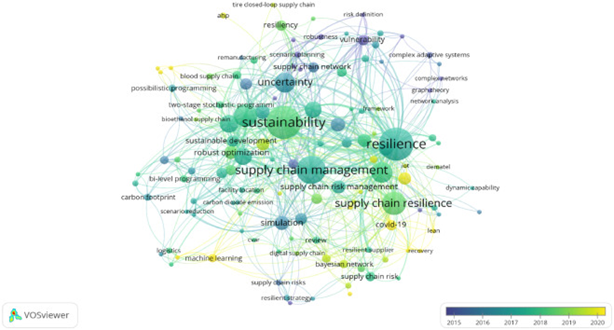
Source: Joshi (2022)
https://www.sciencedirect.com/science/article/pii/S2666412722000010
A sustainable supply chain (SC) network indicates a group of participants who function collectively to develop a sustainable circular economy by supposing the strength for ecological and social problems around numerous phases of the product lifecycle (Nayal et al. 2022). The advantage of executing this viewpoint is that certain participants are capable to compensate for others in the network and hence facilitating the company to fulfill its sustainable development goals. It implies that the attainment of sustainability might happen by including various interrelated participants who might possess diverse goals (Shulla et al. 2020). The Challenges are discussed below:
It is worthwhile that increasing costs is one of the major challenges while making sustainable supply chain networks. It is asserted that sustainable development may be extremely expensive. It can be costly to conduct research on and to establish novel substructures, clean technologies such as distributed electricity generation, and more. This is further expensive to re-make the supply chains, find substitutes for nonrenewable natural resources, train the stakeholders, and so on |(Allaoui et al. 2019). It can be said that the growing costs might decline the speed of operationalization of sustainable development in the SC networks. Such a challenge is extremely tiresome when short-run perceptions for decisions are in concentration and the stakeholders are not ready to undertake practices for paying additional for sustainable SC solutions (Fritz, et al. 2021). For example, Walmart's Company experienced higher costs while building a sustainable supply chain network. Since the entire supply chain of this company usually entails steps such as demand forecasting, sourcing, procurement, storing, and morẹ. It is vital for the companies to effectually handle their sustainable SC to certify that they possess the correct goods in stock to fulfill client demands and keep the costs under control (Winata and Ellitan 2023).
The challenge can be to change the behavior of SC stakeholders. It needs an enhanced awareness among SC stakeholders regarding what sustainable development is and understanding what its guidelines are. To internationally surge sustainability knowledge of stakeholders is deemed as the subsequent challenge since SCs are emerging internationally both vertically and horizontally. Nevertheless, surging awareness might not essentially alter the behavior of SC’s stakeholders. There exist resisting outlooks against using clean technologies and adapting to guidelines of peak oil. It has contributed to the higher inertia against altering the present corporate idea of logistics and SCs wherein entire aspects of sustainable development are compromised for only short-run fiscal sustainability (Sharma et al. 2022),
It has been found by Micheli et al. (2021) that the antagonistic impacts prevalent in the SC's endeavors are also challenges. It is said that rebound impacts and carbon leakages are supposed as certain paradoxical events. Carbon leakage entails the movement of releases from one sector to another or from one nation to another. The rebound impacts happen while lessening ecological degradation from a sector. There can be numerous examples of rebound impacts in the SCs. Examples can be when energy effectiveness or reasonable fuel stimulates greater consumption or e-commerce surges product transport while declining personal transport (Mak et al. 2022).
It is noteworthy that there exists a myriad of uncertainties about the sustainability outcomes of SC design and functions. From the viewpoint of social and ecological, it is still not evident how the localization of product influence civilization locally or internationally. Moreover, there are also numerous tactical uncertainties associated with governmental laws and decisions, forthcoming variations in logistics substructure, client behavior, competitive edge, strategies formed by companies, and so on. Besides, there are numerous operational uncertainties with regard to choices of fuels, routing of vehicles, and more. They might occur because of unpredicted events such as novel client demands, road construction, climate changes and so more (Garcia and You 2015).
It is noteworthy that governing sustainable SCs in a corporate manner wherein entire stakeholders admit and follow the corporate standards and laws is deemed as another challenge. A cause is various settings wherein supply chains function. Such settings can vary from a native place to urban areas, regions of a nation, and diverse nations. Another cause can be the segmented nature of the SCs. Evert element of the chain might be part of numerous other chains, have contracts with myriad companies, and be controlled by diverse legislations (Panigrahi et al. 2018).
Discussion on How to Measure Success
It is said that supply chain sustainability performance is now gauged not as per the economic performance but also its social and ecological performance. Indicators such as GRI (Global Reporting Initiative) and DJSI (Dow Jones Sustainability Index) are accessible to be used to measure the success of supply chain sustainability. There is no doubt that GRI offers global norms for long-run business sustainability utilizing all-inclusive questions pertinent to social, economic, and environmental aspects and entails nearly 100 indices.
The indicators which can be utilized to gauge the success of sustainability in the supply chain entail worker engagement, worker health, process safety, social investment, native recruiting practices, product stewardship, preventing corruption, security & human rights, and more.
It is true that the idea of green supply chain management was introduced to involve ecological issues of the SC. The environmental indicators which can gauge the success of the sustainability of SC entail energy management, environmental health, alternative energy sources, greenhouse gas emissions, environmental governance, and so on.
It is noteworthy that economic effectiveness is deemed the major performance indicator for an SC which entails costs, services, and operational effectivenesses. The economic indicators which can gauge the success of the sustainable SC entail profits and value; risk management; corporate sustainability; investors and ROI (return on investment); and so on. The economic indicators further entail response time, productivity, product availability, time to market, return ability, return on assets, return on investment, and more (Siew 2015).
Question 2
As per the Natural Resources Based View, the resources might be emanated from environmental and social issues. Notably, NRBV operates on the guideline that a business’s competitive edge essentially relies on its relationship with the natural setting. This view recognizes how businesses can produce a competitive edge based on the competencies which advocate sustainable development. There are three major elements of the NRBV of the firm which are also termed key strategic capabilities. These entail pollution prevention, sustainable development, and product stewardship which are elucidated below. Also, the NRBV of a firm will be applied to close-loop SCM which aims to surge competitive ecological sustainability. There is no doubt that the closed-loop SCM is usually the major driver of sustainability and is described as the major force in attaining sustainable operations (McDougall et al. 2019).
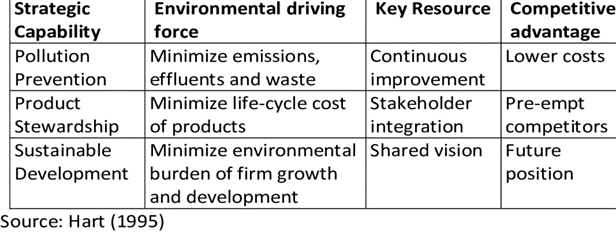
Source: Jaini and Hussin (2019)
https://www.researchgate.net/figure/The-Conceptual-Framework-of-Natural-Resource-Based-View_tbl1_340451092
Pollution Prevention
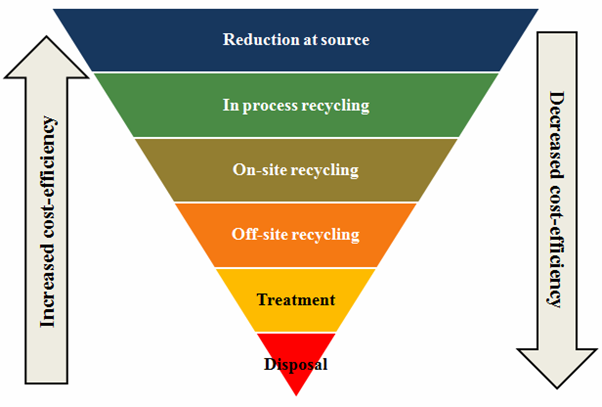
Source: Gavrilescu (2010)
https://www.researchgate.net/figure/Pollution-Prevention-Hierarchy-Cagno-et-al-2005-Gavrilescu-et-al-2008-Schiopu-et_fig7_287677398
Pollution prevention intends to endorse ecological sustainability while consequently reducing costs and surging productivity through internal functions. It can be said that stopping internal wastage and emission costs related to disposal are evaded and internal functions simplified.
With respect to sustainable supply chain management practices, it can be said that the internal closed-loop strategy aligns with pollution prevention’s movement from conventional management and waste disposal and pollutants to endorse competitive ecological internal systems. This element of NRBV provides recapturing prospects that reduce wastes and effluents. It might entail sensor-regulated machines to preserve energy, internal recapturing systems to stop duplicity and endorse reuse to prevent wastages. It has been found that the pollution prevention appears as a causally vague routine that can develop a company’s exclusive cost reductions as its competitive benefits (De Stefano et al. 2016).
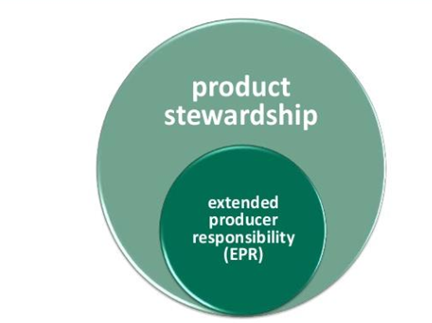
Source: Peterson (2014)
https://www.semanticscholar.org/paper/EFFECTIVE-PRODUCT-STEWARDSHIP-MODELS%3A-A-LOOK-AT-THE-Peterson/7b7ff8ff69016abbab1a89658431dee2f8fbe639
Product stewardship enlarges ecological sustainability to the external functions, pursuing the conservation, evasion of dangerous substances, and reusability from a lifecycle viewpoint. Next, ecological and economic benefits are sought to allow access to limited resources and the development of wholly subsidiary goods as a source of competitive advantage. This element develops the potential for a competitive edge via tactical preemption by developing norms that are beneficial to the focal business. Product stewardship addresses the ecological issues of the stakeholders in the business’s product designs and development procedures. Subsequently, the business tries to reduce the ecological influences and life cycle costs of its goods to stay competitive. Such a competitive benefit is attained by predicting forthcoming patterns and building ecological competencies. This element offers businesses the prospect of exiting ecologically dangerous corporate actions. Moreover, it provides prospects to redesign, imaginative, and recreate current goods and procedures to lessen losses and liabilities. Product stewardship can facilitate a company to reduce the social as well as economic costs of the goods. Furthermore, since product stewardship practices entail robust involvement with external stakeholders, businesses can develop socially intricate networks to prevent competition (De Stefano et al. 2016).
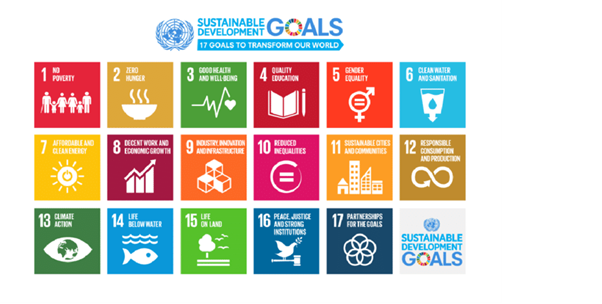
Source: Rosen (2017)
As per Guang et al. (2012), sustainable development endorses the consideration of ecological, societal, and economic problems on an international scale. It can be said that novel manufacturing procedures in view of ecological progressions and novel business markets in view of social advancement endorse constructive impact functions. The prospects for competitive gain occur in the development of such procedures ahead of rivals and access to novel, unsaturated marketplaces of the forthcoming. A business’s dedication to implementing sustainable management practices needs enormous investments and long-run commitments to market development. It is because of the small-run profitability. Such a commitment possesses the strength to surge a business’s forthcoming performance in respect of its rivals which can lead to a higher forthcoming competitive edge. This element has twofold noteworthy variances from the other two elements. Firstly, a sustainable development approach doesn’t usually pursue to perform less ecological harm but, instead, to really generate in a manner that can be preserved indefinitely into the forthcoming. Secondly, sustainable development is not limited to ecological issues but also entails emphasizing social and economic concerns (Yunus and Michalisin 2016). A shared vision for this component by reducing its ecological influence and depicting robust involvement with external stakeholders must bring forth forthcoming prospects and gains from stable competency development for long-run competitiveness.
Application of NRBV for Sustainable Supply Chain Management (SCM) 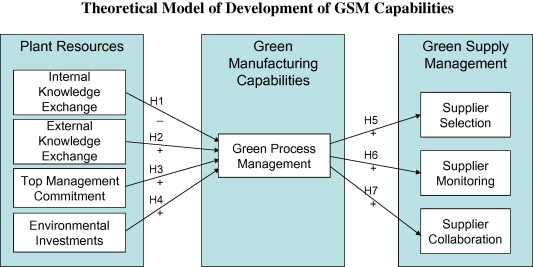
Source: Gavronski et al. (2011)
https://www.sciencedirect.com/science/article/abs/pii/S1366554511000792
It is stated by Graham (2018) that based on NRBV, lean SCM, and green SCM enable product stewardship and pollution prevention, subsequently, via their diverse fundamental means. It is said that green SCM forms the product stewardship competency by integrating stakeholders in SCM and putting ecological issues throughout the product life cycle that particularly refines ecological performance and attains authority and surges economic performance in the long term. Moreover, lean SCM forms the pollution prevention competency by eliminating wastage and non-value added endeavors and the constant improvement throughout the supply chains that declines functional costs and reduces ecological influences. Businesses may pursue to enlarge their ecological attempts to the supply chain levels via the adoption of a product stewardship approach. This element can be implemented via a set of ecological activities carried out at diverse phases of the supply chain. Also, businesses pursuing to be ecological leaders in their sector can adopt a sustainable development approach. It is further asserted that the product stewardship and pollution prevention element of the NRBV entail the operational necessities for greener production which can be understood via the below three guidelines:
Allaoui, H., Guo, Y. and Sarkis, J., 2019. Decision support for collaboration planning in sustainable supply chains. Journal of Cleaner Production, 229, pp.761-774.https://doi.org/10.1016/j.jclepro.2019.04.367
Birkel, H. and Müller, J.M., 2021. Potentials of industry 4.0 for supply chain management within the triple bottom line of sustainability–A systematic literature review. Journal of Cleaner Production, 289, p.125612.https://doi.org/10.1016/j.jclepro.2020.125612
De Stefano, M.C., Montes-Sancho, M.J. and Busch, T., 2016. A natural resource-based view of climate change: Innovation challenges in the automobile industry. Journal of Cleaner Production, 139, pp.1436-1448.https://doi.org/10.1016/j.jclepro.2016.08.023
Fritz, M., Ruel, S., Kallmuenzer, A. and Harms, R., 2021. Sustainability management in supply chains: the role of familiness. Technological forecasting and social change, 173(C), p.121078.https://doi.org/10.1016/j.techfore.2022.121804
Garcia, D.J. and You, F., 2015. Supply chain design and optimization: Challenges and opportunities. Computers & Chemical Engineering, 81, pp.153-170.https://doi.org/10.1016/j.compchemeng.2015.03.015
Gavronski, I., Klassen, R.D., Vachon, S. and do Nascimento, L.F.M., 2011. A resource-based view of green supply management. Transportation Research Part E: Logistics and Transportation Review, 47(6), pp.872-885. https://doi.org/10.1016/j.tre.2011.05.018
Graham, S., 2018. Antecedents to environmental supply chain strategies: The role of internal integration and environmental learning. International Journal of Production Economics, 197, pp.283-296.https://doi.org/10.1016/j.ijpe.2018.01.005
Guang Shi, V., Lenny Koh, S.C., Baldwin, J. and Cucchiella, F., 2012. Natural resource based green supply chain management. Supply Chain Management: An International Journal, 17(1), pp.54-67.https://doi.org/10.1108/13598541211212203
Hart, S.L., 1995. A natural-resource-based view of the firm. Academy of management review, 20(4), pp.986-1014.
Hoque, N., Biswas, W., Mazhar, I. and Howard, I., 2019. LCSA framework for assessing sustainability of alternative fuels for transport sector. Chemical Engineering Transactions, 72, pp.103-108.http://doi.org/10.3303/CET1972018
Huo, B., Gu, M. and Wang, Z., 2019. Green or lean? A supply chain approach to sustainable performance. Journal of cleaner production, 216, pp.152-166.https://doi.org/10.1016/j.jclepro.2019.01.141
Jaini, A. and Hussin, N., 2019. Towards Developing a Framework of Enviropreneurial Marketing Strategy for SMEs in Malaysia. International Journal of Academic Research in Business and Social Sciences, 9(9), pp.348-358.
Joshi, S., 2022. A review on sustainable supply chain network design: Dimensions, paradigms, concepts, framework and future directions. Sustainable Operations and Computers. https://doi.org/10.1016/j.susoc.2022.01.001
Mak, S.L., Wong, Y.M., Ho, K.C. and Lee, C.C., 2022. Contemporary Green Solutions for the Logistics and Transportation Industry—With Case Illustration of a Leading Global 3PL Based in Hong Kong. Sustainability, 14(14), p.8777.https://doi.org/10.3390/su14148777
McDougall, N., Wagner, B. and MacBryde, J., 2019. An empirical explanation of the natural-resource-based view of the firm. Production Planning & Control, 30(16), pp.1366-1382.https://doi.org/10.1080/09537287.2019.1620361
Micheli, P., Johnson, M. and Godsell, J., 2021. Editorial How the Covid-19 pandemic has affected, and will affect, operations and supply chain management research and practice. International Journal of Operations & Production Management, 41(6), pp.773-780.https://doi.org/10.1108/IJOPM-06-2021-902
Nayal, K., Raut, R.D., Yadav, V.S., Priyadarshinee, P. and Narkhede, B.E., 2022. The impact of sustainable development strategy on sustainable supply chain firm performance in the digital transformation era. Business Strategy and the Environment, 31(3), pp.845-859.https://doi.org/10.1002/bse.2921
Panigrahi, S.S., Bahinipati, B. and Jain, V., 2018. Sustainable supply chain management: A review of literature and implications for future research. Management of Environmental Quality: An International Journal, 30(5), pp.1001-1049.https://doi.org/10.1108/MEQ-01-2018-0003
Peterson, D.P., 2014, October. Effective Product Stewardship Models: A look at the Overseas Evidence. In WasteMINZ Conference, Wellington, New Zealand (Vol. 30).
Petraru, M. and Gavrilescu, M., 2010. Pollution prevention, a key to economic and environmental sustainability. Environmental Engineering and Management Journal, 9(4), pp.597-614.Rosen, M.A., 2017. Sustainable development: A vital quest. European Journal of Sustainable Development Research, 1(1), p.2.
Ruggerio, C.A., 2021. Sustainability and sustainable development: A review of principles and definitions. Science of the Total Environment, 786, p.147481.https://doi.org/10.1016/j.scitotenv.2021.147481
Sharma, M., Luthra, S., Joshi, S. and Kumar, A., 2022. Developing a framework for enhancing survivability of sustainable supply chains during and post-COVID-19 pandemic. International Journal of Logistics Research and Applications, 25(4-5), pp.433-453.https://doi.org/10.1080/13675567.2020.1810213
Shulla, K., Leal Filho, W., Sommer, J.H., Salvia, A.L. and Borgemeister, C., 2020. Channels of collaboration for citizen science and the sustainable development goals. Journal of cleaner production, 264, p.121735.https://doi.org/10.1016/j.jclepro.2020.121735
Siew, R.Y., 2015. A review of corporate sustainability reporting tools (SRTs). Journal of environmental management, 164, pp.180-195.https://doi.org/10.1016/j.jenvman.2015.09.010
Virtanen, P.K., Siragusa, L. and Guttorm, H., 2020. Introduction: Toward more inclusive definitions of sustainability. Current Opinion in Environmental Sustainability, 43, pp.77-82.https://doi.org/10.1016/j.cosust.2020.04.003
Von Keyserlingk, M.A.G., Martin, N.P., Kebreab, E., Knowlton, K.F., Grant, R.J., Stephenson, M., Sniffen, C.J., Harner Iii, J.P., Wright, A.D. and Smith, S.I., 2013. Invited review: Sustainability of the US dairy industry. Journal of dairy science, 96(9), pp.5405-5425.
Winata, M. and Ellitan, L., 2023. The Effectiveness of Technology Development Towards Walmart’s Sustainability Supply Chain Management. J-CEKI: Jurnal Cendekia Ilmiah, 2(2), pp.224-248.
Yunus, E.N. and Michalisin, M.D., 2016. Sustained competitive advantage through green supply chain management practices: a natural-resource-based view approach. International Journal of Services and Operations Management, 25(2), pp.135-154.https://doi.org/10.1504/IJSOM.2016.078890
You Might Also Like:
The Importance of Reflective Leadership in Business
Reimagining Monthly Restaurant Discovery Assessment Answer
1,212,718Orders
4.9/5Rating
5,063Experts
Turnitin Report
$10.00Proofreading and Editing
$9.00Per PageConsultation with Expert
$35.00Per HourLive Session 1-on-1
$40.00Per 30 min.Quality Check
$25.00Total
FreeGet
500 Words Free
on your assignment today
Get
500 Words Free
on your assignment today
Request Callback
Doing your Assignment with our resources is simple, take Expert assistance to ensure HD Grades. Here you Go....
Lock in your expert now.
Pay the rest only after you're 100% satisfied.
Why this is a no-brainer:
